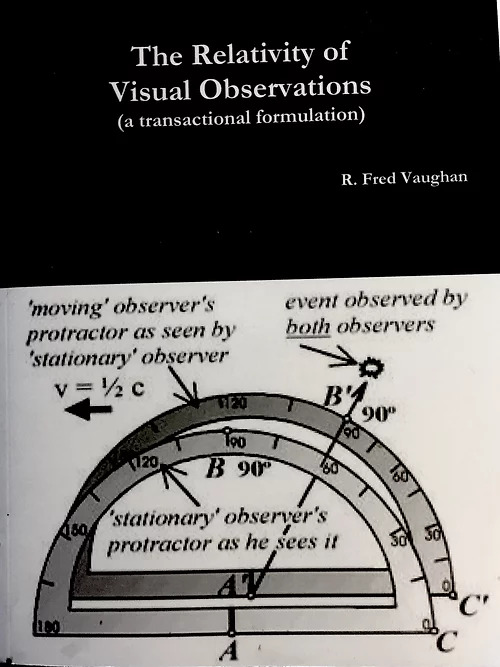
$15.95
The Relativity of Visual Observations
A properly formulated theory of relativity must address the relationship of observations made by relatively moving observers. Einstein emphasized the preeminence of light to understanding relativity and thus, visual observation cannot be discounted. Therefore in this monograph we focus on the relationship between visual images that could be seen by two coincident, relatively moving observers in order to check the veracity of claims for otherwise unobservable features of the special theory of relativity. Penrose and Terrell were first to employ an approach of visually inspecting images of relatively moving objects to demonstrate that Lorentz contraction of an object could never be directly observed. But they did not extend the approach to the determination of what clock face images would be visible to two such relatively moving observers. If they had broached that subject of what a wall clock (as against a static object) would ‘look’ like, including the time stamp it displays for relatively moving observers, they would have had to acknowledge that much more than mere ‘appearance’ was involved. The spacetime ‘realities’ of relatively moving observers are what come into question. The motivation for, and goal of, the investigation that gave rise to this volume is presented graphically in the first 20 pages included as an excerpt her.
If, as Einstein’s special theory claims, both observers witness identical events (which of course includes the times of their occurrence) when the observers are in coincidence, then visually observed clock images should display the same clock times for both observers. But we have shown that such mutual observability (MO) is incompatible with the other maxim of the special theory concerning frame independence (FI) of light sources when one employs the Lorentz transformation equations. This inconsistency impugns Penrose’s and Terrell’s acquiescence of the ‘reality’ of Lorentz contraction in constructing the images that would be observed using the Lorentz temporal equation.
The established convention of what constitutes an observation in relativity theory has had to be challenged in order to even investigate the related issues. This endeavor has revealed a veritable Pandora’s box of ambiguities with regard to what clock image should be observed. What clock face would, in fact, be observed by two relatively moving observers if frame independence (FI) of the light source and mutual observability (MO) of detecting events were both truths of nature as it seems evident they should be? Frame independence and the role of observation in the overall framework of the special theory are brought into question on this account as well as the associated issue of appropriateness of the interpretation of the Lorentz transformation equations central to Einstein’s relativity. These are not inconsequential issues that can be ignored as mere ‘appearance’. To salvage these essential concepts as integral to a legitimate theory of relativity has required a much deeper look at what constitutes an observation.
The established interpretation of relativity has relied almost exclusively on mathematical formulas that can scarcely be visualized. In fact, Einstein sometimes cautioned against even attempting to visualize much of his special theory – and for good reasons involving inconsistencies that are identified in this monograph. We have illustrated a viable alternative transformation and associated interpretation involving only slightly different formalities that bring consistency to the relationship between observations. These differences support straight forward explanation as well as visualization of the physical basis for the very strange experimentally verified relationships of observed phenomena from relatively moving frames of reference.
The physical basis of relativity involves the transverse nature of propagation of electromagnetic radiation. The electric and magnetic field directions are affected by relativistic aberration causing elliptically polarized light to propagate along helically elongated paths to effect what might easily be confused as time dilation. These physical insights address what have otherwise been virtually incomprehensible paradoxes left as the imponderable consequences of exclusively mathematical formulas. This alternative to Einstein’s special theory is extensible to a generalized relativity theory employing a relative spacetime metric even for uniform motion. It is implicitly compatible with other major experimentally mature theories of physics because of its mutually compatible treatment of the observation of physical phenomena.